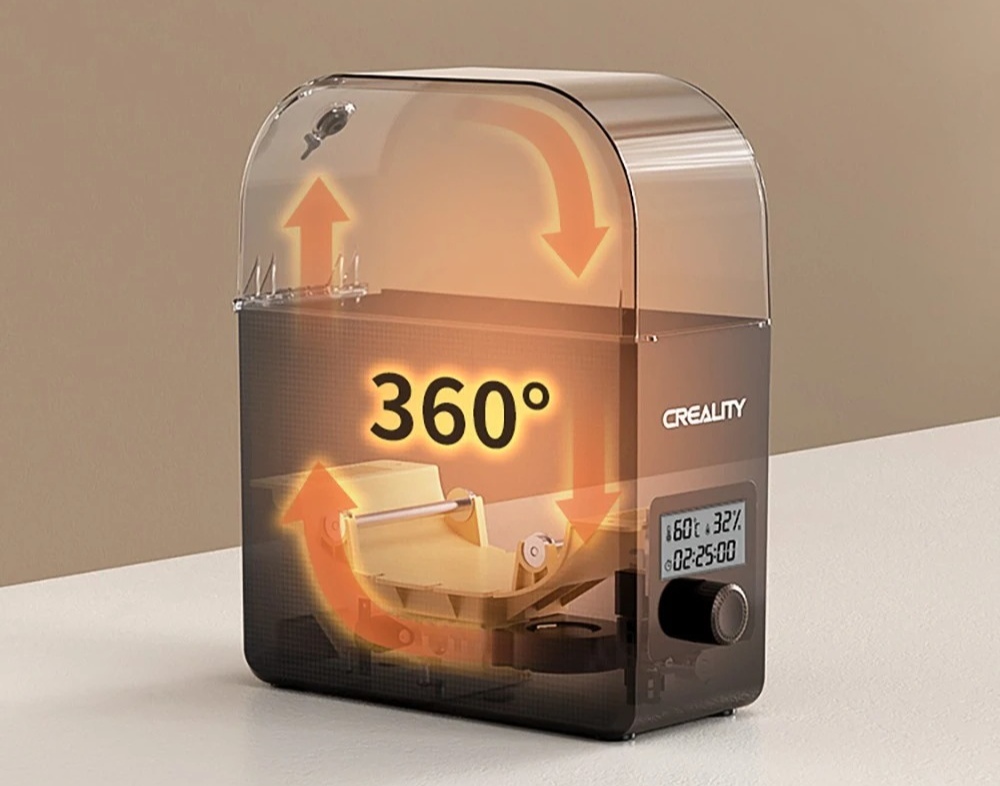ABS filament ranks among the top choices for 3D printing, attributed to its superior mechanical characteristics, resistance to heat, and simplicity in post-processing.
While ABS falls between PLA and PETG in terms of performance, it has some advantages over each. ABS is more heat resistant and durable than PLA, though PLA is easier to print with. Compared to PETG, ABS is simpler to store and modify after printing despite PETG producing fewer odors and less warping during printing.
ABS filament continues to be extensively utilized owing to its significant value. This method is cost-effective and apt for a wide array of uses, especially in prototype and operational components.

Creality Hyper-ABS Filament – Buy on Geekbuying
Printing ABS may present difficulties, yet the outcomes usually validate the endeavor. This piece will provide several strategies to assist you in effectively printing using ABS. This encompasses methods to prevent warping, reduce problems with layer adhesion, and enhance ABS configurations for your printer.
Tip #1 You Need An Enclosure
An enclosure is essential for successful ABS printing. ABS is sensitive to temperature changes, drafts and dust particles which cause warping, layer separation and print failures.
An enclosure shields the print, maintains an even temperature and traps ABS fumes. This stable environment allows you to optimize ABS settings for consistent results. Without an enclosure for temperature control and particle isolation, ABS prints often warp or fail.
If you plan to print with ABS filament, an enclosure is a must-have to counter ABS’s sensitivities and ensure reliable prints. The enclosure contains ABS fumes and allows you to install filters for ventilation.
Tip #2 Taking Measures to Improve Bed Adhesion
ABS often struggles to stick to bare glass or textured build plates, causing warping or lifting of the first few layers. Achieving proper bed adhesion is critical when printing with ABS filament.
Several techniques can be used to promote adhesion between the print bed and the first layer:
- Applying an adhesive or glue stick creates a bonding surface for the initial layers. These products fill in textured areas and provide a surface the ABS can stick to.
- Spraying hairspray on the bed before printing can also help ABS adhere, though it is less consistent and requires reapplication.
- Using a raft or brim in your slicer settings mechanically anchors the first layer to the bed, preventing it from warping or detaching during printing. A raft completely surrounds the print, while a brim only attaches at the outer edges.
Without taking measures to improve bed adhesion, ABS filament prints are prone to lifting, separating from corners and edges, and eventually failing. Applying an adhesive coating, using hairspray, or enabling raft/brim modes can provide the bed adhesion that ABS requires to overcome these issues. Proper bed adhesion for ABS starts with selecting the right technique for your printer and material.
Tip #3 Proper ABS Filament Storage
Like many thermoplastics, ABS filament is hygroscopic and absorbs moisture readily. Excess moisture in ABS filaments causes poor layer bonding, brittleness, and print failures.
The effects of moisture absorption may not appear immediately. Beginners may struggle to identify moisture issues as the cause of adhesion problems and print quality degradation. Over time, moisture absorption can lead to bubbles popping from the extruder nozzle during printing.
Proper filament storage is especially critical for ABS due to its hygroscopic nature. If kept in humid conditions, ABS absorbs moisture quickly which degrades print performance.
Storing ABS filament in a dry box with desiccant packets is an effective way to maintain low moisture levels during both storage and printing. Alternatively, vacuum-sealing ABS filament in plastic bags between uses can help keep it dry. Both techniques minimize exposure to humidity that would otherwise be absorbed by the material.

Creality Filament Dryer Box – Buy on Geekbuying
For users in humid environments, taking precautions like dry box storage or vacuum sealing is necessary to produce quality prints from ABS filament. Moisture absorption can cause troubling issues that may be difficult for beginners to diagnose, so preventing moisture uptake through proper storage is the best solution.
Conclusion
To summarize, successful printing with ABS filament necessitates an enclosure for temperature stability and draft protection to prevent issues such as warping and lifting. Additionally, utilizing bed adhesion methods like adhesives, hairspray, rafts, and brims is crucial to ensure strong adhesion of the initial print layers and avoid failed prints. Proper storage of filament in dry boxes or vacuum-sealed bags is also essential to prevent ABS filament from absorbing moisture, which can lead to print degradation, bubbling, and layer separation. Despite the challenges, mastering ABS filament is beneficial due to its heat resistance, durability, and versatility. By addressing ABS’s sensitivities through enclosure, bed adhesion, and dry storage, users can overcome initial difficulties and achieve high-quality results in the long run.










